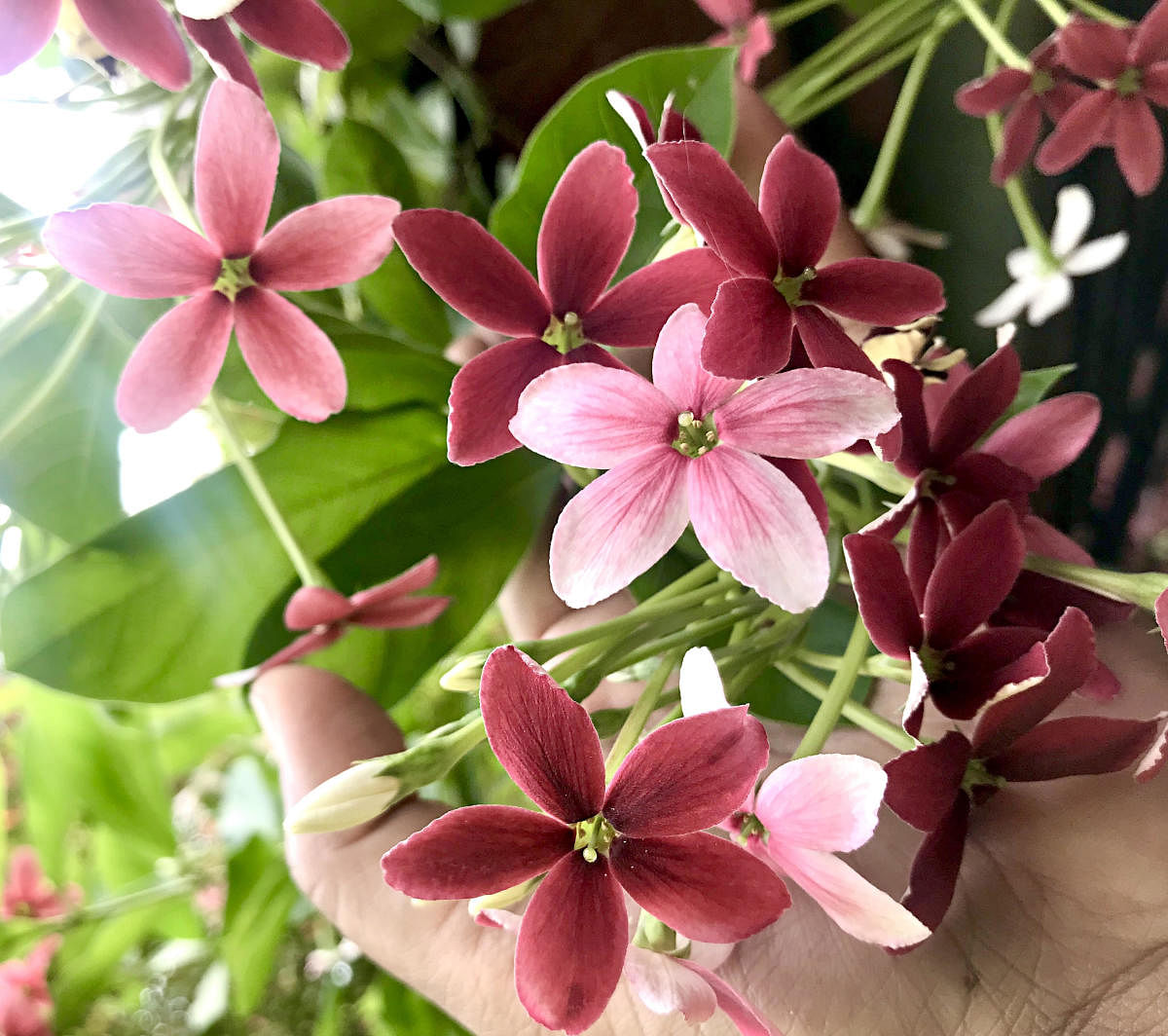
Last Sunday morning, someone rang the doorbell and started knocking on our door. I wondered if it was one of my neighbours. While I wore my mask hurriedly, I asked who it was. The voice of a young girl replied, “Aunty, can I see your garden?”
I was amused and opened the door. She said she was a college student and wanted to see my garden. If possible, she would also take some cuttings, she added. I was surprised that she spotted the garden behind the raised compound wall of my house. I asked her. And she said she walked on our road often and figured out the presence of a garden. She reminded me a bit of myself, except that I never dared to knock on a door and ask for a tour.
We intuitively associate houses, people, or locations with trees and flowers. The first plant that I mapped was Plumeria Obtusa (Frangipani, Champa). It brings back memories of night walks with my father. There was a house at the corner of our street where a Plumeria Obtusa grew. The plant stood tall in the centre of their garden, beneath a pergola. I knew the flowers were abloom even before we reached their house. The mild scent would float in the silent night and fill the nostrils. Years later, when I planned our garden, the first plant I added to the list was the frangipani.
Of oranges and greens
When I drive through the city, I like to look at houses and gardens. There are a couple of favourites. One of the houses has an elevated fence with Pyrostegia Venusta (orange trumpet vine/orange bignonia) spread across the entire length of the compound. The house is situated on a busy road with vehicular traffic. The use of the vine is twofold here: One is to brighten the yard, and the other is to filter the fine dust and smoke from entering the home. The vine blooms for four to five months (from December to April in Bengaluru) in a year, and the house beams with the bright orange-coloured flowers. The rest of the year, the vine colours the front yard with a pleasant green.
Another house in my list of favourites is the one that has Combretum Indicum (Chinese honeysuckle, Madhumalati, Rangoon creeper) climbing to the first floor and spreading its flowers across the entire facade. The red, pink, and white shade of the flowers catch the eye from a distance. A couple of years back, the house was under renovation, and the vine was gone. Months later, my heart skipped a beat when it saw the flowers climbing the facade of the renovated house. Combretum Indicum requires a full sun to grow. It also needs a moist soil and regular pruning and nutrition.
A vine that is ornamental and a delight is Passiflora. There are many varieties of Passiflora to choose from. It is easy to propagate and is every gardener’s delight. Native to Peru, there are more than 400 varieties around the world. It was introduced to Europe in the early 1600s and spread to other countries subsequently. My first meeting with Passiflora Incarnata was in a resort. It was running wild across an arch with a mind of its own. I was stunned by the inflorescence of the drooping, stylish flowers. Passiflora does well in full sun as well as in partial shade. It prefers moist soil. If you grow it in a pot, make sure it is at least two feet deep.
Like any plant enthusiast, I fell in love with all the above vines. They now grow in the nooks and corners of my garden.
I do not know the owners of any of the houses above whose plants I adore. But what I do know is that plants define spaces. They can make a simple corner majestic and a lone corner colourful. They brighten the day and also bring a smile to a passerby.
Here are a few vines to help you plan your garden.
1. All jasmine varieties, Thungberia Mysorenisis (Mysore trumpetvine), Combretum Indicum (madhumalati), Jacquemontia (sky blue cluster vine) grow well in full sunlight.
2. Thungberia Susie(Black-eyed Susan vine), Hoya Carnosa, Clerodendrum thomsoniae (Bleeding-heart) do well in partial shade. I shall write about each of them in detail in future columns.
Do tell me about plants and the memories they evoke in you. You can reach me at the social media handles below. Happy gardening, and until next time, cheers from Allamanda.
Motley Garden is your monthly pot-pourri of observations and lessons from gardening and nature.
The author is a botanical artist from Bengaluru. You can find her on Twitter and Instagram as @neelavanam